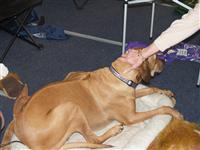
Work with Pets
ACS Student Comment: Undertaking research reinforces learning, and it makes me learn more than I would on the course notes alone. The tutor's comments are very useful. He also provides links to interesting materials relative to my course. Lana Hurley, Australia, Pet Care course
A course for pet owners or anyone working with pets, providing a sound introduction to caring for a wide variety of different pets including dogs, cats, fish, birds, rabbits, rodents, reptiles and amphibians.